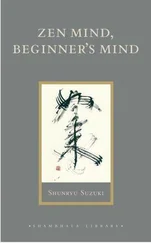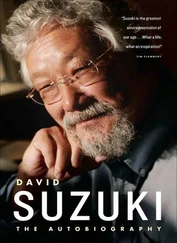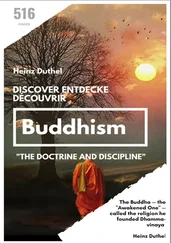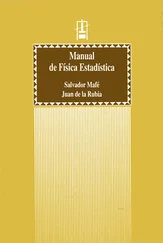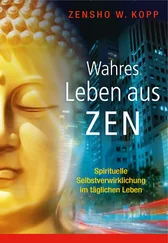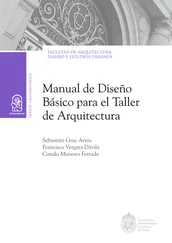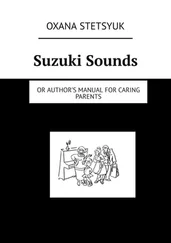Teitaro Suzuki - Manual of Zen Buddhism
Здесь есть возможность читать онлайн «Teitaro Suzuki - Manual of Zen Buddhism» весь текст электронной книги совершенно бесплатно (целиком полную версию без сокращений). В некоторых случаях можно слушать аудио, скачать через торрент в формате fb2 и присутствует краткое содержание. Жанр: Религиоведение, Религия, Руководства, на английском языке. Описание произведения, (предисловие) а так же отзывы посетителей доступны на портале библиотеки ЛибКат.
- Название:Manual of Zen Buddhism
- Автор:
- Жанр:
- Год:неизвестен
- ISBN:нет данных
- Рейтинг книги:3 / 5. Голосов: 1
-
Избранное:Добавить в избранное
- Отзывы:
-
Ваша оценка:
- 60
- 1
- 2
- 3
- 4
- 5
Manual of Zen Buddhism: краткое содержание, описание и аннотация
Предлагаем к чтению аннотацию, описание, краткое содержание или предисловие (зависит от того, что написал сам автор книги «Manual of Zen Buddhism»). Если вы не нашли необходимую информацию о книге — напишите в комментариях, мы постараемся отыскать её.
Manual of Zen Buddhism — читать онлайн бесплатно полную книгу (весь текст) целиком
Ниже представлен текст книги, разбитый по страницам. Система сохранения места последней прочитанной страницы, позволяет с удобством читать онлайн бесплатно книгу «Manual of Zen Buddhism», без необходимости каждый раз заново искать на чём Вы остановились. Поставьте закладку, и сможете в любой момент перейти на страницу, на которой закончили чтение.
Интервал:
Закладка:
The Buddha tells Rahula to strike the bell and asks the assembly what they hear. They all say that they hear the bell. The bell is struck again, and they again say that there is a sound which they hear; and that when the bell ceases to ring there is no sound. This questioning and answering is repeated for a few times, and finally the Buddha declares that they are all wrong, for they are just pursuing what does not properly belong to them, forgetting altogether their inner Essence which functions through those objective mediums or conditions. The Essence is to be grasped and not the hearing, nor the sound. To take the latter for reality is the result of confused mentality. By the practice of Vipasyana this is to be wiped off so that the Mind-essence is always recognized in all the functions of an empirical mind as well as in all the phenomena of the so-called objective world. By thus taking hold of the Mind-essence, there is a “perfect interfusion” of all the six Vijnanas, which constitutes enlightenment.
14. The root of birth and death is in the six Vijnanas and what makes one come to the realization of perfect interfusion is also in the six Vijnanas. To seek enlightenment or emancipation or Nirvana is not to make it something separate from or independent of those particularizing agents called senses. If it is sought outside them, it nowhere exists, or rather it becomes one of particular objects and ceases to be what in itself it is. This is why the unattainability of Sunyata is so much talked about in all the Mahayana sutras.
In the true Essence there is neither samskrita (created) nor asamskrita (uncreated); they are like Maya or flowers born of hallucination. When you attempt to manifest what is true by means of what is erroneous, you make both untrue. When you endeavour to explain object by subject and subject by object, you create a world of an endless series of opposites, and nothing real is grasped. To experience perfect interfusion, let all the opposites, or knots as they are called, be dissolved and a release takes place. But when there is anywhere any clinging of any sort, and an ego-mind is asserted, the Essence is no more there, the mysterious Lotus fades.
15. The Buddha then makes some of the principal persons in the assembly relate their experience of perfect interfusion. That of Kwannon among them is regarded as most remarkable. His comes from the auditory sense as his name implies. It leads him up to the enlightened state of consciousness attained by all the Buddhas, and he is now Love incarnate. But at the same time he identifies himself with all beings in the six paths of existence whereby he knows all their inner feelings and aspirations reaching up towards the love of the Buddha. Kwannon is thus able to reveal himself anywhere his help is needed, or to any being who hears him. The whole content of the Kwannon sutra is here fully confirmed.
16. Learning is not of much avail in the study of Buddhism as is proved by the case of Amanda, who being enticed by the magical charm of a courtesan was about to commit one of the gravest offences. In the practice of Samadhi the control of mind is most needed, which is Sila (moral precept). Sila consists in doing away with the sexual impulse, the impulse to kill living beings, the impulse to take things not belonging to oneself, and the desire to eat meat. When these impulses are kept successfully under restraint, one can really practise meditation from which Prajna grows; and it is Prajna that leads one to the Essence when the perfect interfusion of all the six Vijnanas is experienced.
17. We here come to the esoteric part of the Surangama Sutra where the establishment of the mandala is described, together with the mantram. In this mandala the Samadhi is practised for three weeks or for one hundred days, at the end of which those richly endowed may be able to realize Srotapannahood.
18. Next follows the description of more than fifty stages of attainment leading to final enlightenment and Nirvana; then effects of various karma by which beings undergo several forms of torture in hell are explained; then the causes are given by which beings are transformed into varieties of evil spirits and of beast forms. They, however, come back to the human world when all their sins are expiated. There are beings who turn into ascetics or heavenly beings.
19. While disciplining himself in meditation the Yogin is liable to be visited by all kinds of evil beings whereby he is constantly assailed by hallucinations of various natures. These are all due to highly-accentuated nervous derangements, and the Yogin is advised to guard himself against them.
When the Yogin has all these mental disturbances well under control, his mind acquires a state of tranquillity in which his consciousness retains its identity through his waking and sleeping hours. The modern psychologist would say that he is no more troubled with ideas which are buried, deeply repressed, in his unconsciousness; in other words, he has no dreams. His mental life is thoroughly clear and calm like the blue sky where there are no threatening clouds. The world with its expansion of earth, its towering mountains, its surging waves, its meandering rivers, and with its infinitely variegated colours and forms is serenely reflected in the mind-mirror of the Yogin. The mirror accepts them all and yet there are no traces or stains left in it—just one Essence bright and illuminating. The source of birth and death is plainly revealed here. The Yogin knows where he is; he is emancipated.
20. But this is not yet all. The Yogin must be philosophically trained with all his experiences and intuitions to have a clear, logical, penetrating understanding of the Essence. When this is properly directed, he will have no more confused ideas introduced by misguided philosophers. Along with the training in Samatha, the cultivation of Vipasyana is to be greatly encouraged.
IV. FROM THE CHINESE ZEN MASTERS
There is a large mass of literature to be called especially Zen because of its style and terminology. Until the time of Hui-neng (Yeno in Japanese) and his immediate disciples, there was not much, as far as literary expressions were concerned, to distinguish treatises specifically on Zen from the rest of Buddhist literature. But as time went on there grew up what is now known as the Yu-lu ( goroku in Japanese), containing the sayings and sermons, “gatha” poems, and other literary works of a Zen master. Strictly speaking, the Yu-lu or Goroku is not limited to Zen. One of the chief characteristics of the Zen Goroku is the free use of colloquial expressions which are not found in the classical literature of China. As long as Zen appeals to one's direct experience, abstraction is too inane for the mind of a master.
I. BODHIDHARMA ON THE TWOFOLD ENTRANCE TO THE TAO [1]
There are many ways to enter the Path, but briefly Speaking they are of two sorts only. The one is “Entrance by Reason” and the other “Entrance by Conduct”. [2]By “Entrance by Reason” we mean the realization of the spirit of Buddhism by the aid of the scriptural teaching. We then come to have a deep faith in the True Nature which is the same in all sentient beings. The reason why it does not manifest itself is due to the overwrapping of external objects and false thoughts. When a man, abandoning the false and embracing the true, in singleness of thought practises the Pi-kuan [3][1] he finds that there is neither self nor other, that the masses and the worthies are of one essence, and he firmly holds on to this belief and never moves away therefrom. He will not then be a slave to words, for he is in silent communion with the Reason itself, free from conceptual discrimination; he is serene and not-acting. This is called “Entrance by Reason”.
Читать дальшеИнтервал:
Закладка:
Похожие книги на «Manual of Zen Buddhism»
Представляем Вашему вниманию похожие книги на «Manual of Zen Buddhism» списком для выбора. Мы отобрали схожую по названию и смыслу литературу в надежде предоставить читателям больше вариантов отыскать новые, интересные, ещё непрочитанные произведения.
Обсуждение, отзывы о книге «Manual of Zen Buddhism» и просто собственные мнения читателей. Оставьте ваши комментарии, напишите, что Вы думаете о произведении, его смысле или главных героях. Укажите что конкретно понравилось, а что нет, и почему Вы так считаете.

